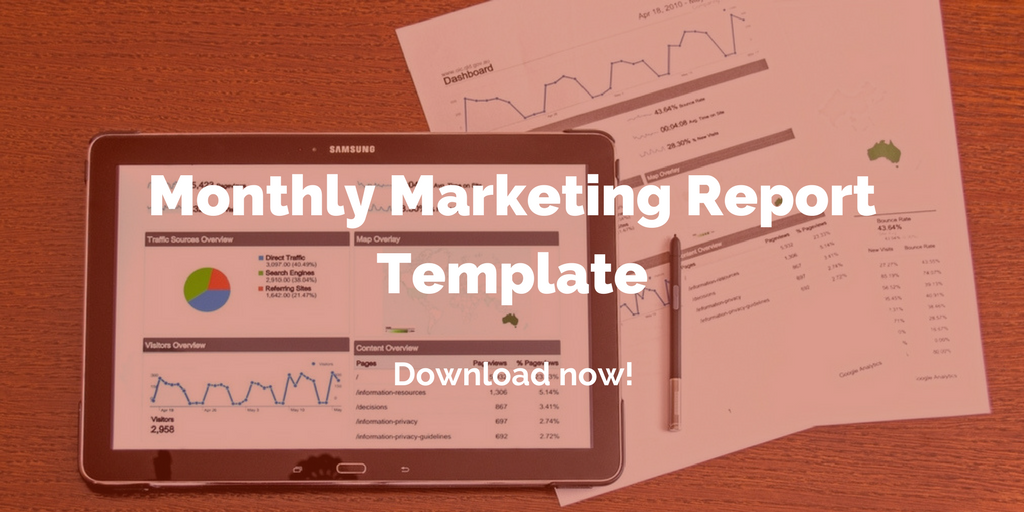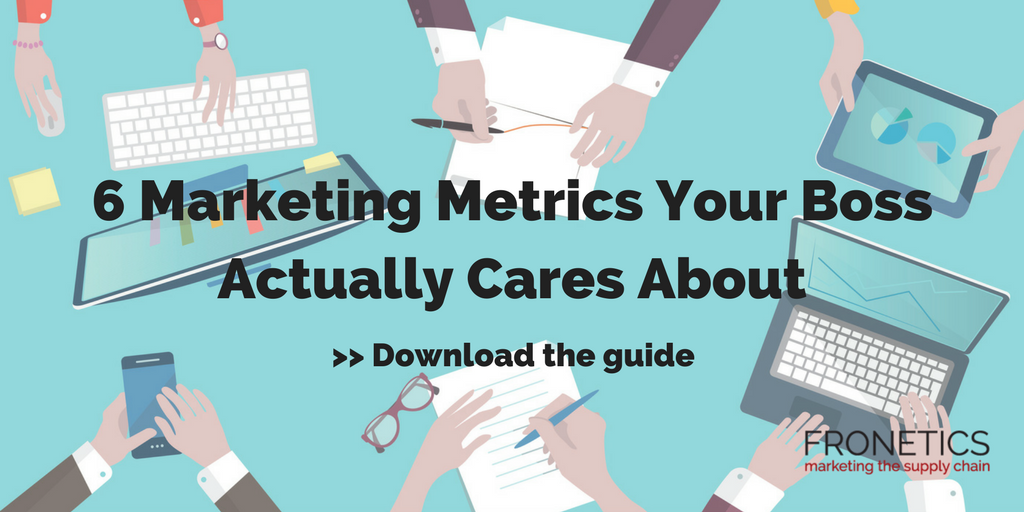
by Fronetics | Jun 7, 2017 | Blog, Content Marketing, Data/Analytics, Marketing, Social Media
Building brand awareness is one of the key benefits of content marketing, but it’s notoriously difficult to measure. Until now.
Content marketing is a long-term solution through which a business establishes a relationship with and earns the trust of target customers. It’s called building brand awareness. Drawing the public’s attention to — and heightening their knowledge of — your business ultimately generates leads that turn into sales, after all, which is the end marketing objective.
Let’s be honest: This doesn’t happen overnight. And it’s often difficult to quantify (as opposed to a vanity metric, such as website visits). But that’s not a reason to throw in the towel. There are ways to measure the work that you’re putting into your content marketing program. And, more specifically, there are ways to measure brand awareness.
4 metrics that indicate you’re building brand awareness
1) Social media reach
The reach of your social content has a direct impact on your brand awareness. The larger the reach, the larger the potential audience.
Twitter originally had an internal tool that tracked how many times a tweet had been shared, but stopped supporting this data back in 2015. So where do you go to track your social media reach?
Sharedcount is a free online tool that allows you to track the number of times a piece of content has been shared on social media, including Facebook, LinkedIn and Google. Sharedcount is an easy way to get basic information about your social reach, so you can spend less time tracking tweets and more time producing your content.
2) Brand mentions
There’s a great deal of value to be gained from monitoring discussions about your brand online. Tracking brand mentions can lead to honest feedback and objective insight from potential leads.
There are several options you can use to track brand mentions. We prefer the ease of Google Alerts, which allows you to easily set up a custom alert, or Hootsuite, where you can track brand mentions, as well as specific keywords and phrases, across all of your social media feeds.
3) Blog shares
By adding a share bar to your blog posts, you make it easy for readers to share your blog content on social networks, spreading awareness about your content and your brand through the amplifying effect of social media.
These share bars are easy to set up and even easier to monitor. By measuring your average number of shares per blog, you can track what content your users are drawn to and what pieces fall flat.
4) Search volume
One of the main sources of traffic for most websites is through simple searches. If people are searching for your company or products, that’s a pretty solid indication that they are aware of your brand.
Using online tools, such as Google Adwords or Moz, you can track the searches for your products, blogs, social media platforms, and any other variation that you find useful. These tools are free, easy to use, and perfect for determining if your company is popping up when customers are searching.
Content marketing takes time, but there are hints along the way that your efforts are working. Using these tools to measure brand awareness offers clues that customers are finding your company in their search efforts. If the needle is not moving in a positive direction, always adjust your strategy to until you find what works for your business.
Related posts:


by Fronetics | Jun 1, 2017 | Blog, Content Marketing, Marketing, Strategy
Today’s B2B buyer’s journey involves more research, more internet searches, and more social media.
We’ve said it before: The B2B buying process has changed, and you need to adapt. The vast amount of information available on the internet has afforded buyers a level of self-sufficiency that renders traditional sales models moot. It drives the need for new strategies, like content marketing and social media marketing.
How can supply chain and logistics businesses adjust to the new way of doing things? The latest B2B Buyer’s Survey offers insight into how B2B buyers are finding vendors, engaging with them, and — ultimately — deciding to work with one. Some of the statistics are very telling and give vendors a good idea about where they need to invest their time and money in order to get buyers’ attention
10 stats about the B2B buyer’s journey
1) Length of buying process
The B2B buying process is becoming longer and more complex because the majority of buyers (82%) are using more sources to research and evaluate products and services, and they are spending more time in the research phase itself.
2) Web search is first
62% of B2B buyers say that a web search was one of the first three resources they use to learn about a solution.
3) Online eventually
In fact, in a different study, 94% of buyers reported using online research at some point in the purchasing process.
4) Searching for what?
71% of B2B researchers start with a generic search — rather than searching for a particular company.
5) How many searches?
B2B researchers do an average of 12 searches before engaging with a specific brand’s site.
6) Self-sufficiency on the sales path
Buyers are 57% of the way down the sales path by the time they engage with a brand’s website, meaning they have already spent a fair amount of time educating themselves with the enormous amount of information available to them on the internet.
7) Social media plays a role
And content isn’t limited to your website: A vibrant social media presence helps buyers conduct their research. In fact, more than half (53%) of B2B buyers report turning to social media to make buying decisions.
8) (More than ever)
What’s more, more than a third (34%) say they are spending more time this year than last using social media to research vendors and solutions.
9) LinkedIn is B2B’s network of choice
LinkedIn is reportedly the most impactful to the research process. 81% of respondents said it was very important or somewhat important.
10) But don’t discount video
And, believe it or not, video sites like YouTube and Vimeo are playing an increasingly important role in the B2B buyer’s journey, with 60% of respondents ranking them very important or somewhat important.
Related posts:

by Fronetics | May 31, 2017 | Blog, Content Marketing, Data/Analytics, Marketing, Social Media
Analyzing the right metrics is crucial to determining whether you are achieving content marketing ROI.
We all want to see the fruits of our labors. Whether launching a product or a new social media campaign, we look for instantaneous numbers that will affirm we made the right choices. But here’s the problem: Not all metrics are created equal. Content marketing ROI is harder to confirm than checking a few quick numbers.
A spike in homepage hits may be the result of your marketing efforts, or it may be because of ghost spam. (Or, both.) Regardless, more visits do not necessarily correlate to increased revenue — just more visits. Even so, 83% of B2B enterprise companies (over 1,000 employees) use web traffic as their main metric for measuring content marketing ROI.
The number of email subscribers is another common success metric. But, again, having 100,000 email subscribers means nothing if only 0.001% are opening them. You actually could be losing money in terms of resources allocated if the emails aren’t helping drive sales. That’s why it is crucial to focus on your company’s return on investment (ROI). You could waste hours reviewing a hundred different analytics that tell you nothing about how revenue was affected by a particular effort.
Know where to allocate resources
Lean-startup pioneer Eric Reis said, “The only metrics that entrepreneurs should invest energy in collecting are those that help them make decisions.” In other words, measure the things that will tell you if an effort was profitable so you know where to put your time and money.
ROI can help you determine whether it was worth spending your resources in a particular way. This is extremely useful on platforms like blogs and social media, where things are constantly changing. Using ROI as a litmus test, you can keep experimenting and making sure you’re using these tools effectively.
According to our Social Media Use Report, 81% of respondents wanted a tracking and measuring tool to prove their ROI. Your resources are limited, so it’s crucial to evaluate your efforts with meaningful numbers that illustrate their affect on your bottom line.
So what are they best metrics to use? Here are three of our favorite tools.
3 tools for measuring content marketing ROI
1) Built-in Social Media Analytics Tools
Most social media platforms have their very own built-in tools that give you detailed information about engagement with your content. Even better, most of these tools are free. Twitter Analytics, Facebook Insight, and YouTube Analytics are just a few examples of tools you can use to measure exposure and engagement with your followers. This priceless information will help you gain a better understanding of your followers and the content they are drawn to.
2) Hootsuite
Hootsuite promotes smarter, data-driven social media marketing decisions backed by real-time analytics that allow you to spot trends as they develop and drill down for insights on how your social content is performing. It takes all your top social media platforms (Twitter, Facebook, YouTube, LinkedIn) and combines them into one application for full-scope results.
3) HubSpot
Measuring ROI through HubSpot is both accurate and convenient. HubSpot sends you weekly updates on your campaign performance and allows you to pull any reports of your own. Standard analysis includes: visits, leads, percentage changes, submissions, bounce rate, downloads, and much, much more. HubSpot Marketing Analytics can identify blog articles, landing pages, emails, and social media posts that perform well in terms of specific keywords.
Calculating ROI might take some time — both in the few extra minutes to do the math and the amount of time that needs to pass before all the data is available — but that number will be invaluable to you.
Let us help you get started. We’ve created a monthly marketing reporting template just for you. This template tracks your marketing metrics and generates graphs you can use in reporting and presentations. Click the button below to get the template (an Excel document) now.

Related posts:


by Fronetics | May 22, 2017 | Blog, Content Marketing, Marketing, Social Media
B2B enterprises with 1000+ employees face unique content marketing challenges that can hinder a program’s overall success.
Bigger isn’t always better. Or, maybe I should say, bigger companies don’t always have it easy.
Big marketing budgets and a big marketing staff have their perks — but they also have their share of challenges. The Content Marketing Institute’s 2017 B2B Enterprise Content Marketing Report, which surveys B2B companies with over 1,000 employees (enterprise marketers), brings many of these issues to light.
The challenges these enterprises face, of course, are quite different from those of their small- and mid-sized counterparts. Here are some of the top differences:
- 72% of B2B marketers agree that their organization is focused more on building long-term relationships than getting quick results. Only 58% of B2B enterprise marketers agree with that statement.
- 52% of B2B marketers agree that their leadership team gives ample time to produce content marketing results (which typically take longer than other marketing approaches). Only 38% of B2B enterprise employees agree that leadership supports their longer efforts.
- 69% of B2B marketers agree that their organization is almost always or frequently focused on creating content for an audience, instead of their brand. 47% of B2B enterprise marketers feel their focus on the brand.
Pressure to produce results quickly is a death sentence for content marketing. And being forced to create content for a brand, rather than a specific audience, can be detrimental to content marketing results. Yes, challenges facing these enterprise marketers are often as large as the companies for which they work.
Let’s take a look at some of the reasons why that is, and a few solutions for solving them.
3 enterprise-level content marketing challenges
1) Organization
While the CMI Report found that 88% of B2B enterprise companies are using content marketing, a mere 2% felt their content marketing strategy was “sophisticated.” Organization might have something to do with that.
Most enterprise organizations have staff that are responsible for multiple brands and product lines throughout the company. Their time is split developing strategies for different marketing programs. Smaller operations, on the other hand, can focus on a single brand, devoting time to developing and implementing a comprehensive strategy that the team can live and breathe — instead of toggling back and forth between programs all day long.
Solution: Outsourcing can be an enterprise’s best friend. A third-party vendor can dedicate itself fully to creating a content marketing strategy that best fits individual products or brands. And the vendor can even drive the strategy, if the enterprise’s resources are so taxed. Check out these 13 stats about outsourcing content marketing to learn more.
2) Clarity
It’s difficult to deem a program effective if there is no clear vision of success looks like. Yet, almost half (45%) of B2B enterprise companies feel their organizations lack clarity for benchmarking success. You can see the problem there.
Oftentimes, especially in larger organizations, the C-suite has a very different idea about what makes a content marketing program successful (i.e., leads and sales), whereas the marketers developing the strategy know that other benefits (e.g., increased brand awareness, social reach) have long-term value.
Solution: Education is key here. For one, set realistic expectations about the length of time it will take to generate tangible results from your content marketing program. Further, marketers need to learn to speak their bosses’ language when it comes to winning support for content marketing. They should regularly report on all progress to show how, over time, “smaller” victories (like growing social media engagement) translates to leads and sales. Check out our Monthly Marketing Reporting Template for some ideas.
3) Content Distribution
As more organizations recognize the benefits of content marketing, they’re ramping up production of content. In fact, 63% of survey enterprise-level respondents reported increasing the amount of content they produce from 2016. That’s great, but — the question is — does more content definitely equal better results?
The answer is not necessarily. Content distribution plays a huge role in getting the most out of what you’re producing. And here’s where the enterprise-level marketing problem lies: 94% of B2B enterprises are using email as their main distribution channel.
I’ve written before about how organizations spend too much time creating marketing emails. I believe organizations tend to stick with this content distribution channel because they see immediate results in the form of open rates and click-throughs. But the reality is that these companies are trying to squeeze water from the same well over and over again. At some point, they’re going to run out.
Solution: Don’t get me wrong: Email marketing is an important component of a well-rounded content distribution strategy. But so are publishing on social media and blogging (on your website and others!). These distribution channels help you reach new prospects who are searching for products and services like yours. Make sure your content distribution strategy includes a variety of platforms instead of just relying on one (like email) or just a few.
It is important to note that there are many B2B enterprise organizations that have highly successful content marketing strategies. Companies like Cisco and Boeing, who are committed to content marketing, have created ways to define what a successful content marketing program looks like and to effectively measure content marketing ROI.
The differences between B2B enterprise content marketing and B2B content marketing overall are tangible but not defining. These larger organizations have the ability to make changes that can redefine their content marketing programs and open the door to endless opportunities.
Related posts:

by Fronetics | May 3, 2017 | Blog, Content Marketing, Logistics, Marketing, Social Media, Supply Chain
There’s never been a better time for supply chain and logistics businesses to implement a content marketing strategy — except for maybe yesterday.
Content marketing is a form of inbound marketing in which vendors publish digital content to attract customers who are searching for products and services like theirs. If done right, it is highly effective in growing brand awareness, generating and converting leads, and driving sales and repeat business.
Think content marketing isn’t for supply chain and logistics businesses? Guess again. Here are five reasons why companies in these industries should use content marketing.
5 reasons to use content marketing
1. Buyers use content to make purchasing decisions.
The B2B buying landscape has shifted dramatically in the last 10 years. Buyers no longer rely on sales reps to make purchasing decisions; they turn to the internet. Companies must shift to accommodate buyers at various levels of self-sufficiency in the purchasing process.
The reality is that 94% of B2B buyers use online research. That means they’re judging whether or not to buy from your business based on the kind of digital content you publish (or do not publish, as the case may be). Consider these stats:
- 95% of B2B buyers are willing to consider vendor-related content as trustworthy.
- 51% more B2B buyers rely on content to make purchasing decisions than they did last year.
- 47% of B2B buyers consume 3 to 5 pieces of content before engaging with a sales person.
2. Control the conversation in your favor.
Customers go online to discuss their buying experiences — both positive and negative. If a potential buyer googles your business’ name, what will they find?
Content marketing puts you in the driver’s seat of reputation control. If you publish thought-provoking blog posts about industry trends, you can earn a reputation as a thought leader in the space. If you curate the latest articles about relevant happenings, people will begin to view your social media accounts as a resource for industry news. Be professional, quirky, clever, ahead of your time, youthful, wise, funny, off-color — whatever your brand is, you can set that reputation by what you publish online.
3. Present yourself as a solution.
When prospects go online they are looking for information and for answers. Position yourself as an expert who fully understands their problems and how to solve them by publishing content that anticipates their pain points. Quickly and fully respond to customer queries on social media. Use content marketing as an opportunity to be the solution prospects are looking for, right when they need it most.
4. Content marketing is more effective than traditional marketing.
Companies in the supply chain and logistics space have a lot to gain by modernizing their marketing tactics. We see this every day with our clients. With the evolving B2B buying landscape, ads in industry publications no longer cut it as a “marketing strategy.”
Take two examples under consideration. How about TotalTrax, a warehousing technology company that grew new business by 30% with content marketing? Or 3PL Cerasis, who gained 98 customers from its content marketing efforts? Content marketing works, and that’s been proven time and again with logistics and supply chain businesses.
5. Your competitors are doing it.
Content marketing is already a widespread practice within the supply chain and logistics industries. If you’re not producing content to attract prospects and retain customers, you’re missing out.
This year, 75% of marketers are increasing their investments in content marketing. Why? Because it works. Successful content marketers experience drastically more site growth than their competitors. In fact, content marketing leaders experience 7.8 times more site traffic than their competitors.
In sum, content = customers. If you’re not using content marketing as part of your marketing program, you’re going to get left behind, if you’re not already.
Related posts:










